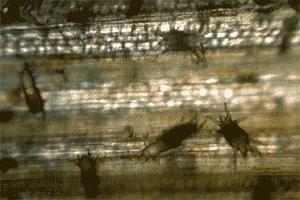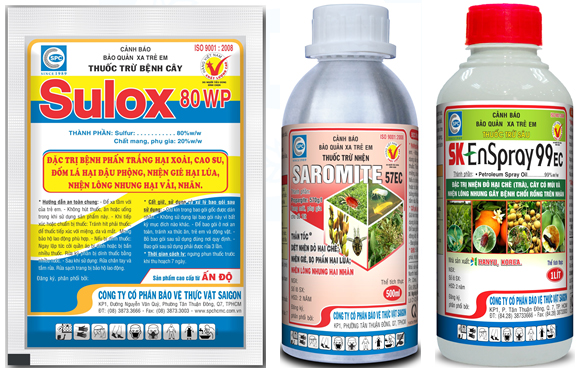|
Panicle Rice Spider
11/11/2021
MSc Huynh Kim Ngoc In the past, panicle rice spiders appeared and caused damage in crops in some provinces in the Mekong Delta River… However, recently, panicle rice spiders have also been reported to appear and cause damage in some northern provinces, yield loss can be up to 50%. Symptom: Panicle rice spiders can appear at almost every stage of rice growth from seedling stage to blooming, ripening and damage parts of rice such as leaf sheath, leaf veins, stem, spike peduncles and even the rice grain . In the seedling stage, spiders mainly harm the outside of the sheath, the junction between the sheath and stem. The tillering- earing stage,spiders bore inward, live and damage in the sheath and veins of the leaves. In the stage of blooming-ripening, spiders cause damage mainly in sheaths, leaf veins, stems, peduncles and if the density is high, the spiders crawl up and burrow into the husk and cause damage on seeds. Common symptoms caused by spiders damage on the sheath, the stem is long dark brown stripes that farmers call wind scrubbing disease or a chewed betel quid. If spiders cause damage on spike, it will cause the spike to have an upright shape because most of the grains are unfilled. Infected grains are brown speckled, distorted. In addition to sucking sap, mechanical wounds caused by spiders also create conditions for some fungi to penetrate and cause harm, notably the fungus causing sheath rot: Sarocladium oryzae. Agents and biological properties: The spider has the scientific name: Steneotarsonemus spinki (Oligonicus oryzae), belongs to the spider order: Acarina. Spiders are very small, transparent, difficult to see with the naked eye, but can be seen with a magnifying glass. The life cycle of spider is short from 10 to 12 days. Female spiders lay about 50 eggs, white eggs, scattered in the sheath, unfertilized eggs will hatch into male spiders. Eggs after 1-2 days will hatch into young spiders, pointed body, long, with 3 pairs of legs.Young spiders last about 4-5 days, then adults last about 5-6 days, with 4 pairs of legs. Spiders live mainly in rice sheaths, leaf veins above water level and cause damage by sucking sap causing long dark brown stripes on sheaths, stems or speckled spots on grains. Environmental conditions: Panicle spiders develop favorably in hot, dry weather and lack of water in the fields, so spiders cause damage mainly in May-June Summer-Autumn crop in the Mekong Delta River and August-September monsoon in the North. It has been shown that mid- and late-season outbreaks of panicle spider are associated with heavy use of insecticides early in the season, thereby reducing the population of spiders natural enemies such as carnivorous spiders and parasitic wasps. The fields are sown thickly, over-fertilized with nitrogen, the fields are dry, in zero tillage, sown continuously, the field hygiene is poor, The field is left with rice that grows from the stubble, weedy rice of the previous crop was infected with spider siders, susceptible varieties (IR.50404, Khang Dan 18, Cai sticky rice with yellow flowers…) are favorable for panicle spiders to develop and cause harm. Management measures - Rotate: (if possible) to cut off the host source. - After harvest, burn the field if the field is often damaged by panicle spider . - Plowing and drying the soil, making the soil carefully, especially the fields of previous crops are often damaged by spiders. - Sanitize the fields, kill the stubble-grown rice and weedy rice of the previous crop that were damaged by the spider siders. - Not sowing thickly - Fertilize balance, reasonable, do not over-fertilize nitrogen. - Keep the appropriate water level for each growth stage of rice, do not let the field dry out. - Protect natural enemies (bees, parasitic spiders), use pesticides when necessary. - Visit the field regularly, pay attention to the tillering-blooming stage (35 - 60 DAS), especially the period from : 35 -50 DAS, use a magnifying glass to observe in the sheath if there are spiders or on the sheath, vein, stem, If peduncles have symptoms as described above (long dark brown stripes), it is necessary to spray insecticides to prevent spider immediately, do not let spiders cause harm on spike peduncles or grains because it is too late. - Regarding spider killer, the following special products can be used to treat spiders: + Sulox 80WP: Mix 60 - 80 g / 20 liters. + Sarosider 57EC: Mix 15 – 20 ml / 20 liters + SK Enspray 99EC Mineral oil : Mix 60 ml / 20 liters. - When spraying product, pay attention to: (1) Before spraying, if possible, put water into the field, so that the spiders move upwards, when spraying, it is easy to hit the product. (2) It is recommended to adjust finely sprayed nozzle and spray on places where spiders live and cause damage (sheath, leaf, stem). (3) Because spiders are very small, hiding in rice sheaths, and covered in thin silk cocoons, they need to spray a lot of water (400 - 500 liters of water/ha). Can spray early morning or cool afternoon. If the rice is blooming, spray in the afternoon (if it does not rain). Follow the instructions on the label carefully.
|
To prevent, in addition to plowing and burying weed seeds, collecting weed stalks and stumps left after tilling the land to burn, not letting weeds produce seeds in production fields, etc., the use of chemical products is still a measure. optimal because of its ability to thoroughly kill weeds, reduce labor and take advantage of more time than manual weeding.
Miner has the scientific name Phyllocnistis citrella Staint., family Phyllocnistidae, order Lepidoptera. The miner occurs in many countries in the tropics and subtropics. The main host of the miner is the citrus family - Rutaceae. In addition, the miner also attacks mangosteen and some other plants.
Adult is a small planthopper, with a body 2-3 mm long, the whole body is ash gray, slightly greenish, the wings are opaque with many small brown spots.Eggs are oval, 0.3 mm long, have a pointed end and are attached directly to the leaf surface, leaf axils.
Green bugs specialize in the fruit of citrus groups (oranges, tangerines, lemons, grapefruits, kumquats...), some people call them orange bugs, or orange suckers. Their scientific name is Rhynchocoris poseidon or Rhynchocoris humeralis.
In Vietnam, yellow leaf curl disease is very common on papaya trees, especially the disease is often severe in areas of high and continuous planting, areas with hot and arid climates. The disease has significantly reduced the yield and quality of papaya. Gardens that are infected early when the plants are young may not yield. However, up to now, many gardeners still do not know the cause and how to fix it.
Spider mites are common pests on citrus trees, especially in hot and dry climates that are suitable for spiders to grow and cause severe damage.The group of harmful spiders is usually very small in size, unlike the natural enemy spiders.
This group includes species that are generally very small in size, causing damage by sucking plant sap (on leaves, fruits, branches, stems).
There are many species of mealybugs present on the group of Oranges,Tangerines,Grapefruits and Lemons (Citrus), which can be divided into 2 groups:
+ Group of sticky mealybugs with common varieties such as Lepidosaphes, Aonidiella, Coccus and Saissetia.
+ Group of flower mealybugs with common genera and species such as Pseudococcus, Planococcus and Icerya purchasi.
Dry branches and berries disease often appear to be common damage on coffee gardens during the rainy season. The disease causes death of branchs, dry fruit, severely affects the canopy structure and coffee yield if not paid attention to prevention.
Pink disease commonly causes diseases on rubber plantations in the rainy season, especially on garden from 4-8 years old. This year, rubber has to go through a period of severe drought, weakening the tree, so now in tnshe rainy season it is easy to get infected. Therefore, it is necessary to pay attention to good management to avoid affecting the garden.
In recent years, the area of citrus has been expanded because it is a fruit tree with high economic efficiency. However, in order to sell at a high price, not only in quality but consumers also require the external beauty of the fruit, so pest management on citrus is a matter of great concern to farmers. The hot season is a favorable condition for thrips to develop and cause damage, affecting the commercial value of fruit.
- Headquarters
- SAIGON PLANT PROTECTION JOINT STOCK COMPANY
- RQ 1, Nguyen Van Quy St., Tan Thuan Ward, HCM City
- Tax code: 0300632232
- Tel: (028) 38 733 295 - 38 732 077
- Fax: (028) 38 733 003 - 38 733 391
- Website: www.spchcmc.vn - Email: info@spchcmc.vn
- SAIGON PLANT PROTECTION COMPANY
- SAIGON PLANT PROTECTION JOINT STOCK ENTERPRISE
- Lot C1-C3 Hiep Phuoc Industrial Park, Hiep Phuoc Commune, HCM City
- Tel: (028) 3873 4089 - Fax: (028) 3873 4086
- Affiliated Unit
-
- Quick Links
- Home
- About us
- Career Opportunities













